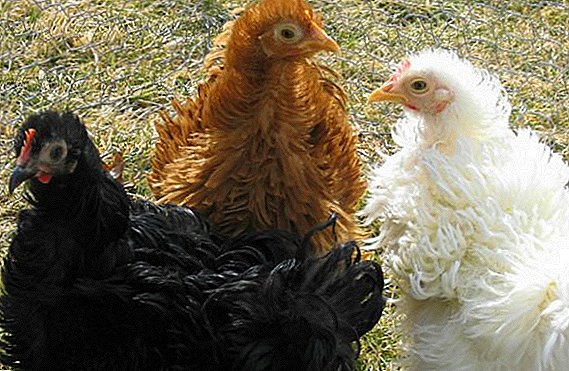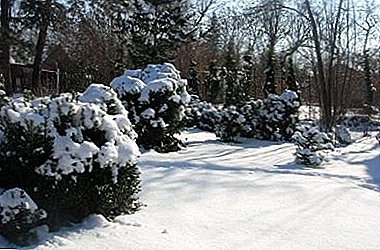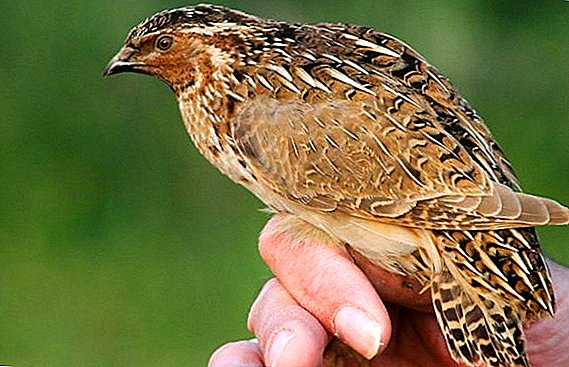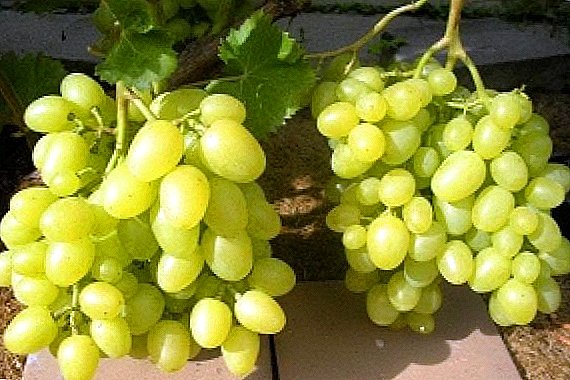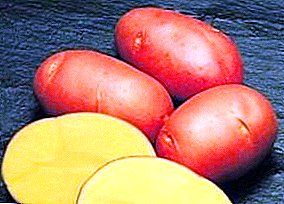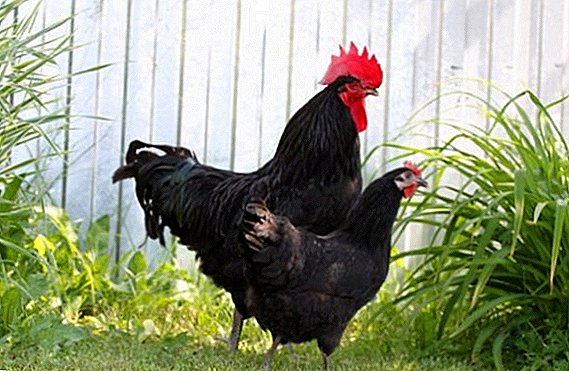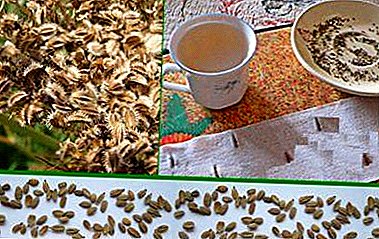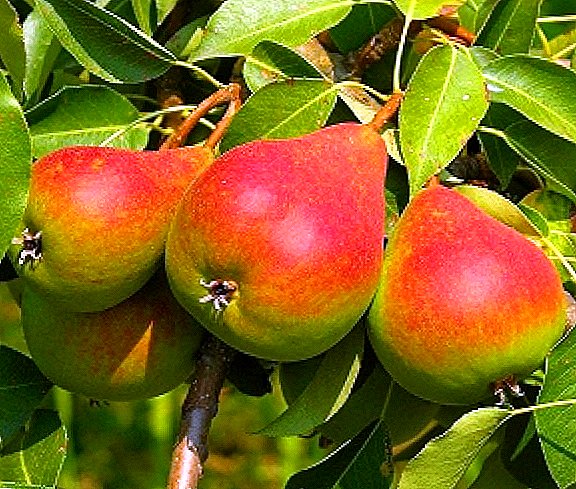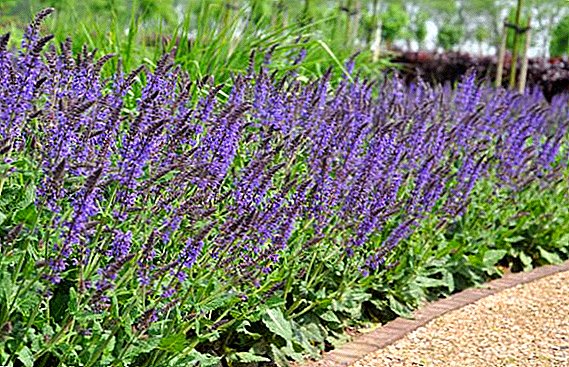 Salvia Dubravny, or Salvia, is a herbaceous shrub that can be an annual or perennial plant. In the suburban areas are often found perennial shrubs.
Salvia Dubravny, or Salvia, is a herbaceous shrub that can be an annual or perennial plant. In the suburban areas are often found perennial shrubs.
Different sorts of sage are used in landscape design, create amazing compositions. It is also popular in traditional medicine and cooking. For these purposes, harvest the leaves of the plant - collected and dried in a dark room.
Did you know? There is a version that the name of the plant Salvia comes from the Latin word salvare, which means "to save."Salvia oakwood is grown in gardens and in summer cottages, planting and caring for the plant is not at all difficult. It is necessary to follow the recommendations for cultivation, and then there will be no difficulties.
Salvia oakwood: description
The sage oak grove is a spicy plant of the family Luminous. It has a grassy stem, narrow lanceolate leaves. Sage flowers are collected in spike inflorescences and have a blue or lilac color.
Sage oakwood description:
- height - 35-90 cm;
- lower stem leaves - 3.5-10 cm long and 1.5-3 cm wide;
- inflorescences are simple, have 1-2 pairs of side branches that exceed the axis of the inflorescence;
- flowers are collected in 4-6 pieces in the flower false whorls, located on the stem at a distance of 1.5 cm;
- sage fruit - triangular globular dark brown nuts.
 The shrub is strongly branched, at the bottom the stem is woody, and remains a grassy plant above. Therefore, in winter, the upper part of the stem can freeze through, but it recovers quickly in spring.
The shrub is strongly branched, at the bottom the stem is woody, and remains a grassy plant above. Therefore, in winter, the upper part of the stem can freeze through, but it recovers quickly in spring.Where is the best place to plant sage oakwood
Salvia oakwood grows in nature in forests, on the hillsides. But it is also possible to grow it as a cultivated plant. To know how to grow sage in the garden, knowledge is needed about the environment in which it can develop safely. It is necessary to choose the right place for plants and soil.
How to choose a place for sage
 To grow sage, you need to know how to plant a plant and where it can be done. Sage oakwood loves light, so the place should be well lit. Also, the site should be well warmed.
To grow sage, you need to know how to plant a plant and where it can be done. Sage oakwood loves light, so the place should be well lit. Also, the site should be well warmed.
If you choose the right place in the garden for sage, it will take root well and quickly grow into a territory of several square meters. When planting plants should be borne in mind that it grows and it is necessary to leave a place in reserve. Usually it is 50-60 cm to the next plant.
What soil does sage prefer?
Since sage is originally a wild plant, it has no special requirements for the soil. The only thing - it is important that there was no close groundwater. And so for the growth of the plant is suitable ordinary garden soil or soil mixture for indoor plants. When planting in open ground, it is necessary to dig up the area beforehand even in autumn and fertilize it with humus, compost or phosphorus-potassium mineral fertilizers. Growing sage from seeds is best done in a soil with normal acidity - 5.5-6.5 pH.
Important! On an overly fertile soil, sage develops well, or rather, its stems and leaves develop well. A flowering occurs very inexpressively - the flowers will be small and the buds will not open well.
Features planting sage Dubravnogo
Propagation of salvia can be done in several ways:
- air layouts;
- cuttings;
- division of the bush;
- seeds.
 Salvia oakwood is often propagated through cultivation from seeds. This method can be implemented by sowing seeds directly in open ground or by growing seedlings at home. As when sown in open ground, sage grows slowly and because of this blooms late, more often it is pre-grown seedlings.
Salvia oakwood is often propagated through cultivation from seeds. This method can be implemented by sowing seeds directly in open ground or by growing seedlings at home. As when sown in open ground, sage grows slowly and because of this blooms late, more often it is pre-grown seedlings.How to grow a new plant - a method of dividing a bush, sowing sage directly into the ground and how to sow sage on seedlings - you can choose by examining all the methods and finding the most suitable for each particular case. Each of them has its own characteristics.
Rules for growing sage oak seedlings
In sage Dubravnogo seed planting for seedlings produced at the end of winter or in March. Planting in open ground is carried out in the fall or spring.
Often it is used precisely the seed method of reproduction of oak sage. This is due to some difficulties of cultivation by dividing the bush. Seed propagation is possible for all types of salvia.
Seedling method
 Salvia oakwood is more often propagated by seedlings, its planting on seedlings takes place in February-March. This method is the most used, because when it is planted directly in open ground, the plant grows slowly and blooms late.
Salvia oakwood is more often propagated by seedlings, its planting on seedlings takes place in February-March. This method is the most used, because when it is planted directly in open ground, the plant grows slowly and blooms late.
For planting seeds for seedlings will need a capacity that must be filled with nutrient, light soil. The seeds are laid on the soil, slightly sprinkled with earth. After that, the soil must be moistened and covered with foil.
When a few leaves bloom, the seedlings dive. Since the period when planting sage seedlings, - this is the very beginning of spring, the seedlings become strong enough already before summer. After 2-2.5 months after sowing seeds, seedlings can be planted in open ground.
Before planting seedlings in open ground, it can be hardened - from the middle of April to take the pots with seedlings for a short time on the street.
Important! Seedlings should receive a sufficient amount of moisture. For this purpose, one can purchase a substrate with hydrogranules for germinating seeds. This will help ensure that the moisture in each seedling is uniform.How to plant seeds right in the ground
Sowing seeds directly into the ground Salvia seeds produced in the winter or early spring. You can sow seeds from March to June.
How to plant sage dubravny seeds directly into the ground:
- the soil is prepared and sprinkled with roasted sand, after which the seeds are laid out on top;
- The laid out seeds are sprinkled with sand, moistened and covered with polyethylene on top;
- during the period of growth you need to monitor the moisture content of the substrate.
Breeding sage dabravnogo division bush
Salvia oakwood can breed by dividing the bush only in the southern regions. You can perform this procedure at the end of August. Shrub gently break in, separated part of the root. The separated part can be used for planting a new separate sage shrub. 
Did you know? Salvia leaves are brewed and drunk as tea. This drink is useful for the prevention of colds, as well as useful during the cold itself.
Features care for oak sage
Sage oakwood requires some care. In fact, it is moderate watering and moderate lighting. It is necessary to avoid drafts and cold temperatures. These rules apply to the care of the plant in the home and in the open field.
How to water the plant
Any types of salvia do not tolerate stagnant moisture in the soil, so you should not overdo it with watering. Young plants will be useful spraying. You can say the plant does not need watering, only if the flowers become sluggish, it serves as a signal to the need to water salvia.
Features feeding sage oak
Annually in spring, sage oakwood needs feeding. Nitrogen fertilizers are suitable for this. Later you can make phosphate and potash fertilizers. At the end of the season, mulching will be useful. Garden compost is great for this.
How to trim a plant
 When growing salvia as a perennial, it is necessary to prune it to form a plant, to give it the desired shape. Also while the plant does not grow up with bare stems, as pruning stimulates a massive increase in shoots, the bushes become more magnificent.
When growing salvia as a perennial, it is necessary to prune it to form a plant, to give it the desired shape. Also while the plant does not grow up with bare stems, as pruning stimulates a massive increase in shoots, the bushes become more magnificent.
After the main flowering is over, you need to completely cut off the salvia forest. In this case, another bloom will come in late summer. Medicinal sage needs to be shortened by two thirds. In this case, the plant will be compact.
Diseases and pests of oak sage
Sage oak, or salvia, in open ground may be affected by leaf spot, spider mite, root cancer. Therefore, it is necessary to properly care for the plant and process it with appropriate preparations.
Among the pests that affect sage oakwood, are:
- sage mite;
- sage weevil;
- sage mosquito;
- sandy ballad;
- scoop winter.
Salvia oakwood is not only a beautiful flower, but also a very useful plant. It is a good honey plant and an effective medicinal plant for sore throats, stomatitis, diseases of the liver, stomach and others. It is not difficult to grow it, and everyone can get a medicinal plant on their own.


